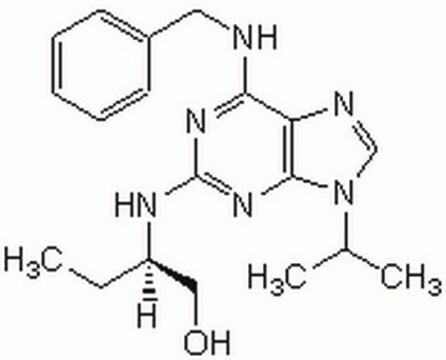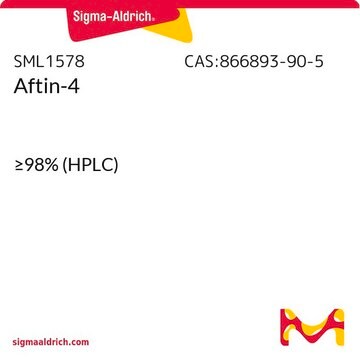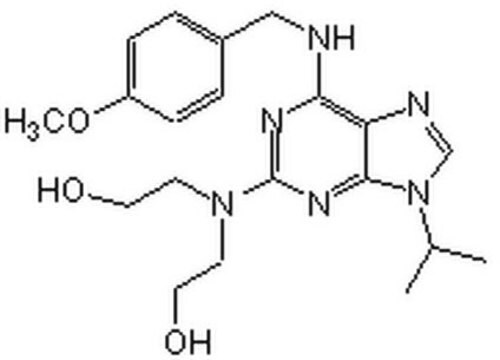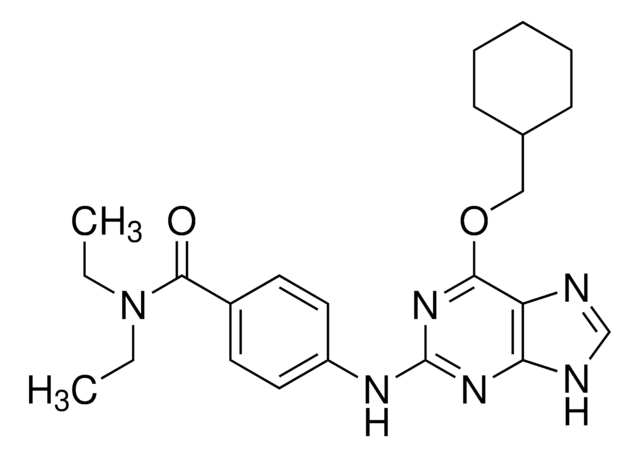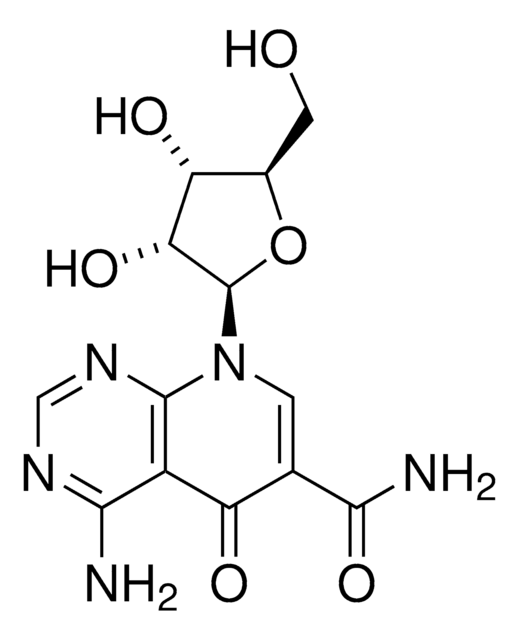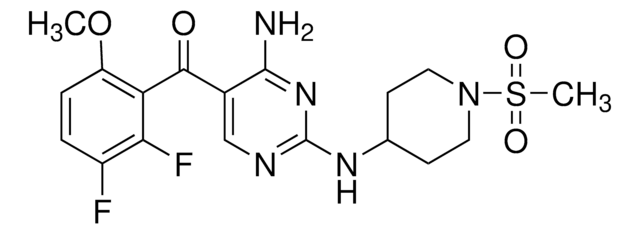R7772
Roscovitine
≥98% (TLC)
Synonym(s):
2-(R)-[[9-(1-Methylethyl)-6-[(phenylmethyl)amino]-9H-purin-2-yl]amino]-1-butanol, 6-(Benzylamino)-2(R)-[[1-(hydroxymethyl)propyl]amino]-9-isopropylpurine
About This Item
Recommended Products
biological source
synthetic (organic)
Assay
≥98% (TLC)
form
powder
mp
106-107 °C
solubility
chloroform: 50 mg/mL, clear, colorless to light yellow
storage temp.
−20°C
SMILES string
CC[C@H](CO)Nc1nc(NCc2ccccc2)c3ncn(C(C)C)c3n1
InChI
1S/C19H26N6O/c1-4-15(11-26)22-19-23-17(20-10-14-8-6-5-7-9-14)16-18(24-19)25(12-21-16)13(2)3/h5-9,12-13,15,26H,4,10-11H2,1-3H3,(H2,20,22,23,24)/t15-/m1/s1
InChI key
BTIHMVBBUGXLCJ-OAHLLOKOSA-N
Gene Information
human ... CDK1(983) , CDK2(1017) , CDK5(1020) , CDK7(1022) , CDK9(1025) , CDKN1A(1026) , CDKN1B(1027) , CDKN1C(1028) , CDKN2A(1029) , CDKN2B(1030) , CDKN2C(1031) , CDKN2D(1032) , CDKN3(1033)
mouse ... CDK1(12534)
rat ... CDK1(54237)
Looking for similar products? Visit Product Comparison Guide
Related Categories
Application
- an inhibitor of p34cdc2/cyclin B kinase to preculture porcine oocytes
- as a supplement in TCM199 medium for in vitro prematuration of cumulus-oocyte complexes (COCs) of adult goats
- in astrocyte conditioned media as an inhibitor of cyclin-dependent kinase 5 (CDK5)
- as a CDK2 inhibitor in culture media to treat hESCs
Biochem/physiol Actions
Features and Benefits
Legal Information
Storage Class Code
11 - Combustible Solids
WGK
WGK 3
Flash Point(F)
Not applicable
Flash Point(C)
Not applicable
Personal Protective Equipment
Certificates of Analysis (COA)
Search for Certificates of Analysis (COA) by entering the products Lot/Batch Number. Lot and Batch Numbers can be found on a product’s label following the words ‘Lot’ or ‘Batch’.
Already Own This Product?
Find documentation for the products that you have recently purchased in the Document Library.
Customers Also Viewed
Articles
Cell cycle phases (G1, S, G2, M) regulate cell growth, DNA replication, and division in proliferating cells.
Apoptosis regulation involves multiple pathways and molecules for cellular homeostasis.
Our team of scientists has experience in all areas of research including Life Science, Material Science, Chemical Synthesis, Chromatography, Analytical and many others.
Contact Technical Service